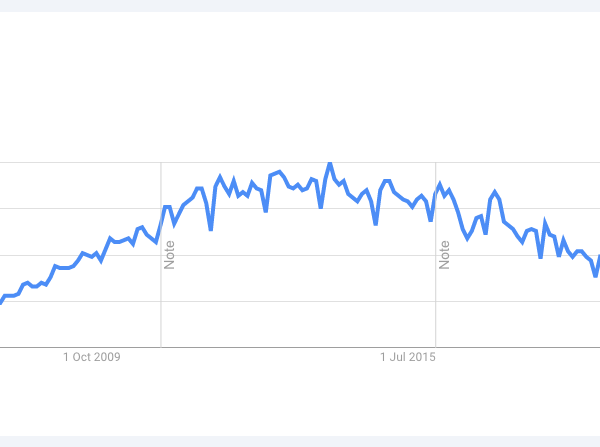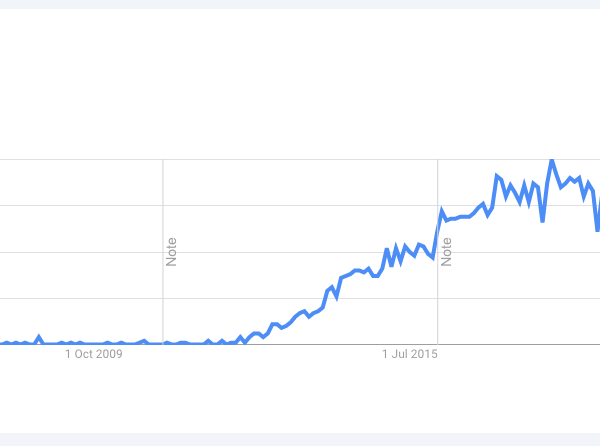Since 2015, there has been a general lack of interest in web platforms like WordPress, and a spike in interest around new web development toolkits like Laravel. You can see the interest in the search term ‘What is Laravel?” from Google Trends and the concurrent decline in the interest around the term ‘WordPress’:
Interest in WordPress vs interest in Laravel


Many people are interested in Laravel because they know it can help them grow their business, however they have a hard time understanding exactly how it works.
In the same way that you would be unlikely to order food off a menu if you didn’t know what it was, many people are unlikely to make the decision to choose Laravel without some idea about what it actually is.
Erm … so what’s Laravel?
Laravel is an open-source web application framework.
… or for those of a less technical persuasion, it is a freely available platform where developers can choose from a huge variety of different code modules (digital assets like calculators, calendars, maps and layouts) and get them easily working together.
It allows developers to share techniques and approaches within the web development community and gives them access to code libraries. This means they can quickly build a website or web application that is bespoke for a customer’s requirements.
In large part, it replaces tools such as third-party plug-ins created for platforms like WordPress and gives developers the ability to make changes and updates depending on their needs, without having to create tools from scratch.
Laravel vs WordPress vs Magento
Firstly Laravel is not just a website platform. This is partly what makes it hard to understand – it is designed specifically to be flexible in solving issues. People love to compare like for like but Laravel is just a framework, it does not come with a specific setup like WordPress (a post / page setup) and Magento (a pre-confgured eCommerce store).
While it can do both of these things, you would tend to use Laravel in cases where these well-worn basic approaches simply wouldn’t be fit for purpose, or at times where the aim of the project fights against the intended purpose of the platform.
For example, a WordPress site with a raft of third-party plugins may be better served by a Laravel approach to make it more efficient. A Magento site which needs an integration that doesn’t exist, like syncing with Salesforce or another complex software program, may also be better achieved with Laravel. While it may be possible to achieve these goals without Laravel, using the framework offers flexibility without sacrificing autonomy or demanding high development time costs.
Again, Laravel is a framework that can be deployed to get bespoke elements working together quickly, easily and without conflicts with other code within the web application.
The use of the term web application is important here. While websites are limited to serving information (think about a sign pointing in a single direction), a web app is dynamic and constantly passes information backwards and forwards between the client and the server.
Gmail, Facebook, YouTube and Twitter are all examples of web apps – where a user can be served information relevant to them and can also send information back to the platform to be shared with other users.
In comparison to regular website platforms, a web application platform extends capability and allows companies to take on new functionality. Laravel is capable of introducing a huge array of dynamic elements – and it can do this without massively increasing the resource or project cost because of its innovative design.
Choosing the best approach for your business
If you are simply looking to have a small brochure website without any special functionality, a WordPress website may be the most cost-effective option.
If you are looking to set up an eCommerce store where customers can purchase a range of products and manage the back office effectively, Magento would be a good solution.
If you need specific tools that Magento and WordPress cannot provide or would be highly complex to achieve then Laravel could be a good fit.
In other words, for highly bespoke websites or areas where dynamic elements are a core part of the project, Laravel is the right option for you.
Who made Laravel?
Laravel was originally designed in 2011, by Taylor Otwell, as a platform specifically created to be lightweight and simple to use. It achieves this primarily by using Symfony, a high-performance PHP Framework with an MVC architecture (Model-Controller-View).
Syfony is owned by MIT and the source code for Laravel also has an MIT licence. This is relevant because MIT is recognised as the gold standard for technology development worldwide.
Learn more about the history of Laravel and the latest updates to the Laravel platform.
Why using Laravel for your project is a good choice
Laravel helps growing companies who need a bespoke and highly customised website or web application create what they need without a prohibitive cost.
Rather than using a bloated theme, a limiting template or sharing a code engine where making changes is impossible, you can speed up the development cycle, mitigate costs and achieve your goals at the same time. It also makes ownership of IP less of an issue because the development company don’t have to put so much time into the actual development process.
We Create Digital and Laravel
We have been developing in Laravel for some time now, and more and more of our new projects are completed on the platform. It gives us flexibility, not only in the design phase but also looking ahead to the future with the capacity to test and improve websites. It also gives us the chance to innovate for our customers with revolutionary techniques in areas such as security, speed and integrations.
To learn more about Laravel and why a bespoke web application might be a powerful option for your business, talk to us today.